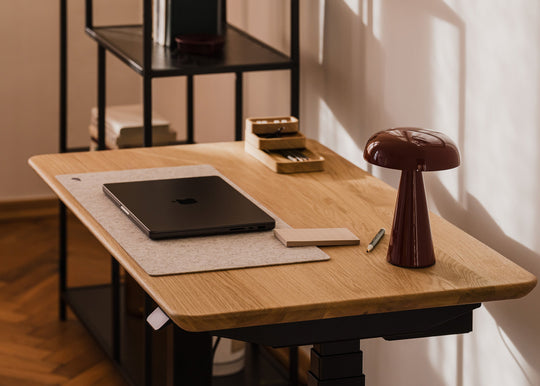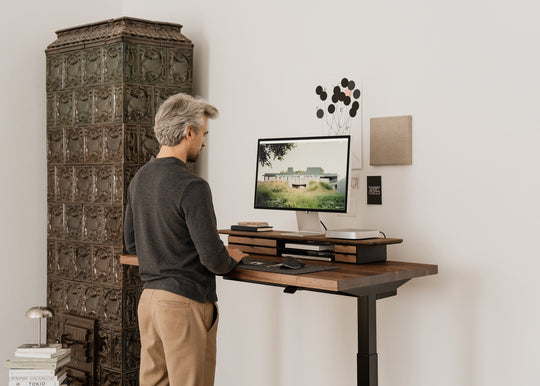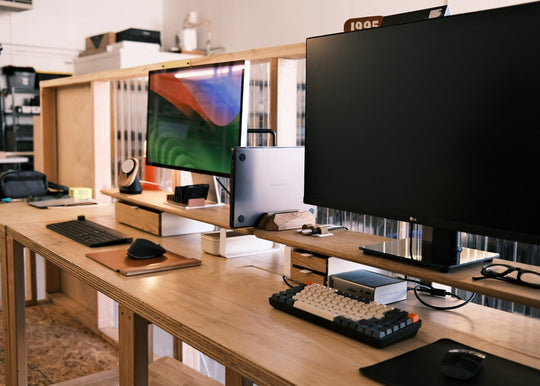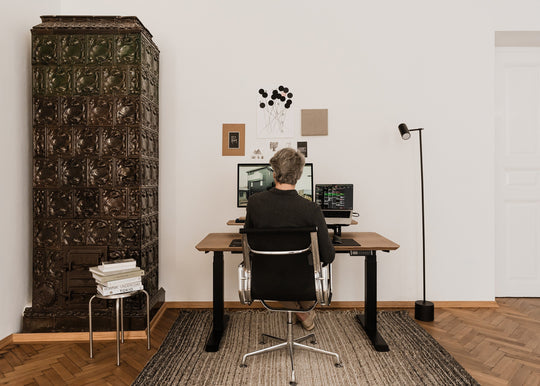
Remote work and its health issues
Despite its many advantages, remote work can sometimes result in various physical and mental health issues – today we will focus on the body. Together with physiotherapist Piotr Piaskowski @fizjologika, we have assembled a number of tips for dealing with the physical effects of a sedentary lifestyle.

Photo by Piotr Paskowski @fizjologika
Remote workers’ afflictions
First you spend 8 hours at your desk, then you lounge on the sofa from which you eventually move to your bed – and you do this at least 5 days a week. If this is what remote working looks like for you, you are in need of some changes. Not having to regularly leave the house to go to work, the lack of a set workout regimen, routine sessions at the gym, or even daily walks, puts you at risk of physical stagnation. This can create some health issues down the line.
Some of the most common health problems caused by remote work and a sedentary lifestyle affect the musculoskeletal system which includes:
- Lower back,
- Shoulders,
- Neck (stiffness),
- Wrists (carpal tunnel syndrome),
- Elbows (tennis elbow),
- Knees and feet,
- Legs (cramps and varicose veins).
Other ailments prevalent amongst office workers (not just those who work remotely) are headaches and computer vision syndrome – the reason for them being excessive eye strain and focusing on objects in proximity (like a monitor or a laptop screen), but also chronic stress, lack of fresh air, and low-quality sleep.
Better safe than sorry
An apple a day keeps the doctor away – or good habits such as frequent change of position, and any preferred physical activity (jogging, going to the gym, Nordic walking, dog walking, solo walking at least 3 times a week), keep health issues at bay. Remember that your spine does not like being stuck in one position for long and needs a substantial dose of exercise – the most effective way of preventing musculoskeletal conditions from developing.
Apart from a frequent position change, consider equipping your home office with ergonomic furniture. The right desk height, optimal monitor placement, or a supportive chair (which can take many forms like, for example, a ball) – are the basis of healthy and effective remote work.
How to handle the pain?

Photo by Klara Kulikova on Unsplash
Sometimes we only start to take care of our health when the first signs already make themselves present and it is too late for preventative measures. In such cases, you shouldn’t wait until your pain becomes unbearable – take appropriate steps now. According to physiotherapist Piotr Piaskowski, the human body has “incredible adaptive capabilities but if detrimental stimuli (sedentary job, stress, physical inactivity) affect it for too long, these can start failing”.
Even when the symptoms appear sporadically and moderately, you should increase your levels of physical activity. The reason for pain and fatigue is most often the weakening of the core muscles responsible for maintaining good posture – our expert says everyday general training to get stagnant muscles working will get rid of the stubborn pain.
Remember that home remedies and methods are not always the best way forward when dealing with pain – you could even do more harm than good. If your pain intensifies and doesn’t subside despite the regular physical activity, seek medical attention immediately. Contact an orthopedist or a physiotherapist to get a diagnosis and suitable treatment.
When to see a physio?

Photo by Joyce McCown on Unsplash
Besides intense and persistent pain, there are a few other symptoms that should make you seek a medical professional’s opinion:
- Limb numbness,
- Weakened skin sensitivity,
- One-sided loss of muscle strength (e.g., one arm or leg feels significantly weaker than the other).
Pay attention to all of the signals your body sends. When even the lightest of objects fall from your hands, you’re unable to keep your balance when standing on one foot, and your knee gives in while climbing up the stairs – it might be time to visit a doctor. Sometimes even seemingly innocent symptoms can indicate an underlying issue with the nervous system or spine.
You don’t have to wait for any symptoms or pain to arrive before seeing a physiotherapist. If you can, consider seeking professional help as a preventative measure and minimize the negative consequences of sitting remote work.
Your health issues can have a detrimental effect on your productivity and the quality of your work – ironically, the harder you work (and neglect your own needs), the worse your results. That’s why taking care of yourself is just a good business decision.








